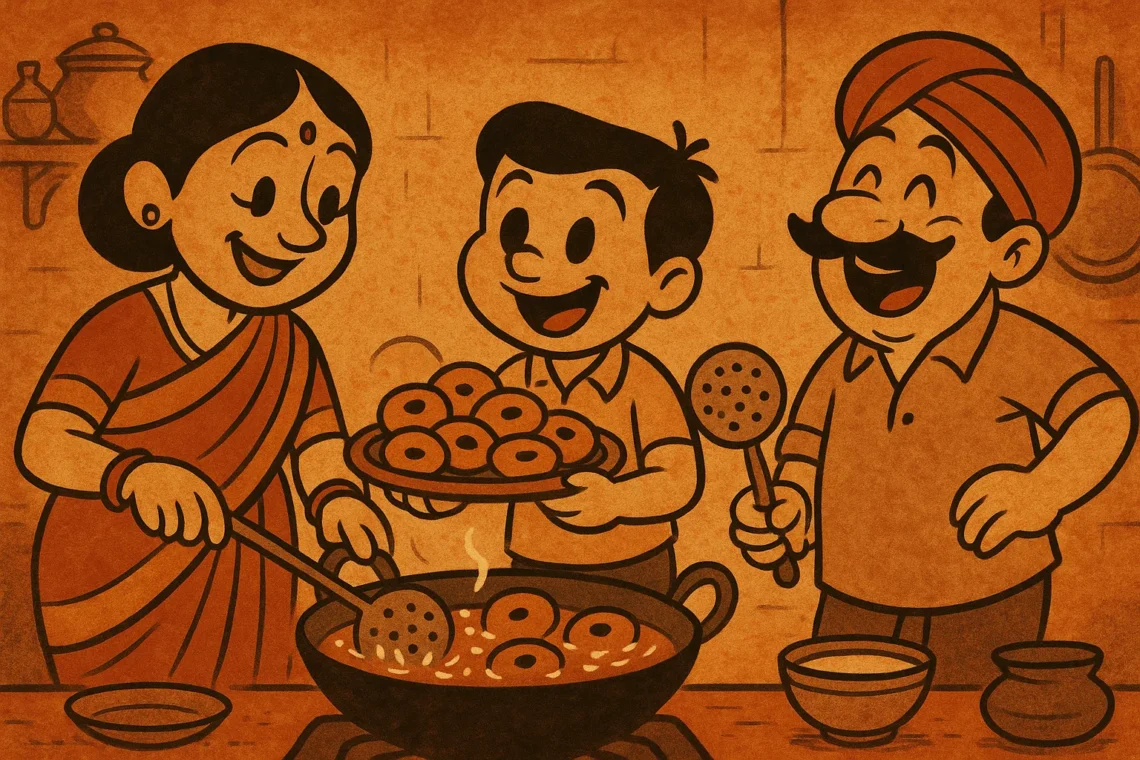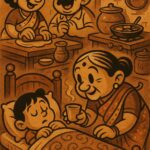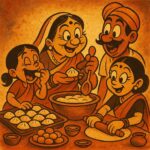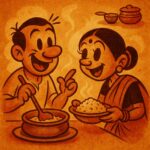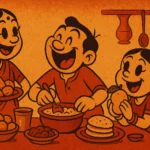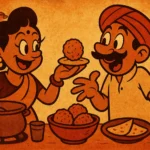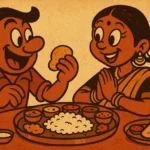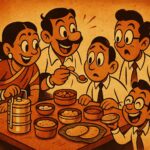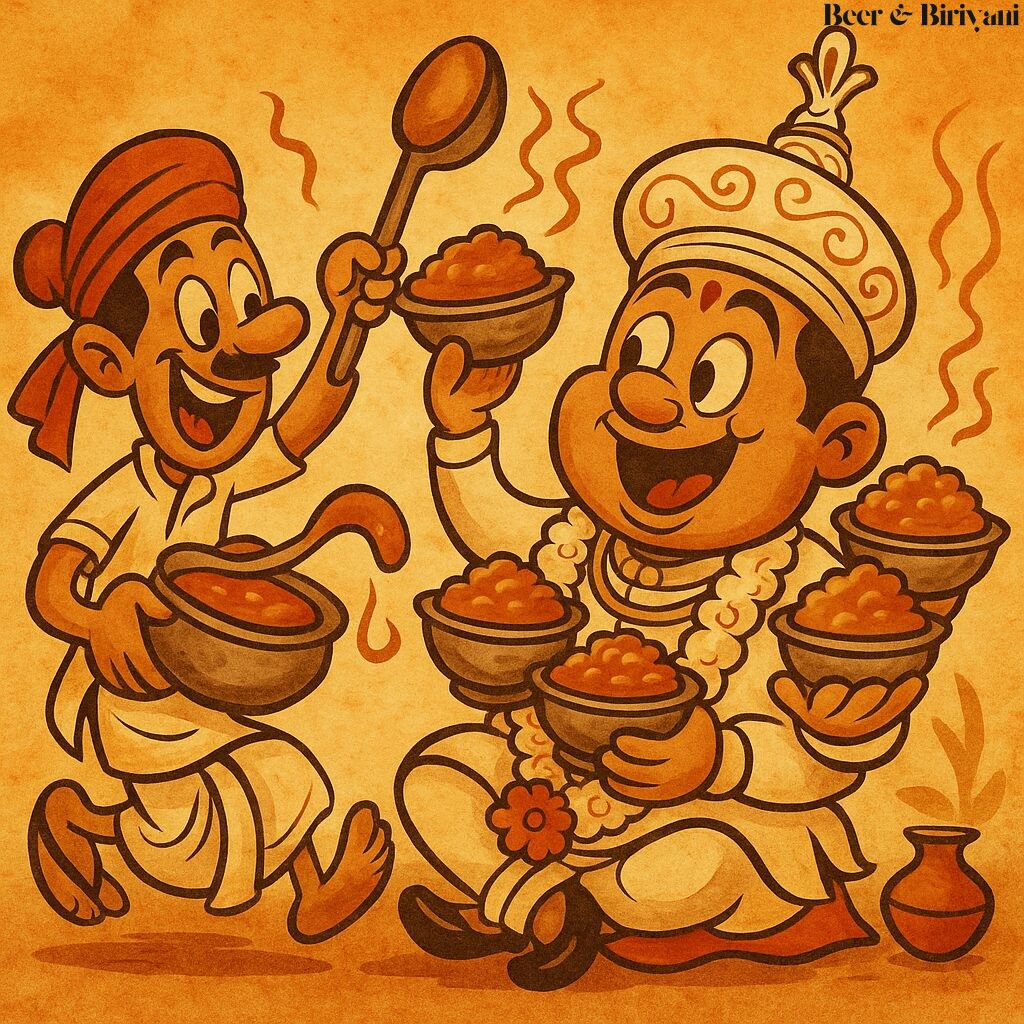The thing about Diwali that no one warns you about — especially if you grow up in an Indian household — is that the festival doesn’t really begin on the day itself. It begins at least a week earlier, in the kitchen, when the entire house starts smelling of ghee, ajwain, and a low-level panic. And if you were raised in a family like mine, that meant one very specific thing: the pre-Diwali frying marathon.
This wasn’t just cooking. It was an operation. A multi-day, multi-generational assembly line that transformed our dining table into a battlefield of chaklis, karanjis, shankarpalis, and other deep-fried legends. There were spreadsheets in people’s heads — Auntie #1 made 6 kgs of sev last year, so this year had to be at least 7. Cousin #2 insisted on his version of sweet-salty mathris. My mom, of course, was the general. Measuring. Mixing. Managing. Moving through the kitchen with the agility of someone who could fry four things at once while scolding you for letting the chakli coil unravel.
Ghee as Fragrance and Fuel
The house smelled like no place else. The aroma of hot ghee wasn’t just a smell; it was an alarm clock, an invitation, a warning. It clung to our hair, our clothes, even the curtains. You could open the door and instantly know: they’re frying today. Even the neighbors — whether they wanted to or not — inhaled our Diwali prep as part of their afternoon walk.
We’d begin early, when the kitchen tiles were still cool under our feet. By 7 AM, trays of dough had already been rolled out. Maida and rava rested in wide thalis like doughy suns. My job was almost always the least trusted — either sprinkling sesame seeds (too much! now too little!) or turning the shankarpali mid-fry with a slotted spoon, while being yelled at not to break them. I broke them anyway. It became part of the tradition.
Generational Coordination (and Chaos)
The marathon had its own choreography. My grandmother would sit cross-legged on a low wooden paat, rolling karanjis with the calm precision of someone who’d done this for over 60 years. My mother moved between gas burners like she was playing tabla. My chachi shouted measurements over the sound of frying, and my job was also to write them down (which I never did). At any given moment, someone was kneading, someone was shaping, and someone was fishing out burnt pieces with a sigh that meant, “Next batch, you do better.”
Occasionally, someone’s mobile ringtone would interrupt — often the default Nokia tune — and it was always answered with flour-covered fingers and a loud “Hello? Haan haan, we’re still frying.” Because this was also the season for neighborhood gossip, secret recipe swaps, and an unspoken competition about whose snacks turned out crispest.
The Trials of Quality Control
The only time I had full freedom was during taste testing. A sacred role. You could pretend you were doing a service — “Hmm, maybe the besan ladoo needs more ghee?” — but really, you just wanted the warm, slightly oily edges of the first batch. Everyone had their favorites. For me, it was the spicy diamond-shaped shankarpali, so sharp and peppery they cleared your sinuses.
My cousin once tried to help by dusting icing sugar on the wrong batch of savory sev. That incident is still referred to in family lore as *The Great Sev Sabotage*. He was exiled from the kitchen that year and only allowed back to wash the vessels.
What the Frying Gave Us
By the end of the marathon — three days in, ghee splatters on the walls, a pile of used newspaper soaking oil from dozens of batches — the entire family was exhausted but glowing. We’d stack steel dabbas in towers, label them with old stickers from school notebooks, and hoard them like treasure. These snacks weren’t just for us. They were for guests, neighbors, relatives, postmen, and anyone who showed up with a Diwali greeting.
And yet, no matter how much we made, by the end of Diwali, it was never enough. Because you didn’t just eat chakli. You shared it over chai, over gossip, over card games, over arguments about how much sugar is too much in a karanji. The snacks were a pretext. The frying was the point. It was our way of coming together before the loudness of the festival began.
Now, living far from home, I’ve tried replicating it. I once bought a chakli press on Amazon and nearly injured myself. I make three snacks max, usually while playing Lata Mangeshkar in the background, just to feel like someone is still watching over my shoulder saying, “Zyada tel ho gaya.” It’s not quite the same. But when the smell of ghee hits the air, just for a second, it feels like home is right here.
That’s what the pre-Diwali frying marathon was. Not a checklist. Not a chore. A ritual. A memory. A family recipe passed down through oily hands and stubborn hearts. And a reminder that sometimes, joy arrives early — disguised as a chakli spiral, still too hot to touch.
Born in Mumbai, now stir-frying feelings in Texas. Writes about food, memory, and the messy magic in between — mostly to stay hungry, sometimes just to stay sane.

